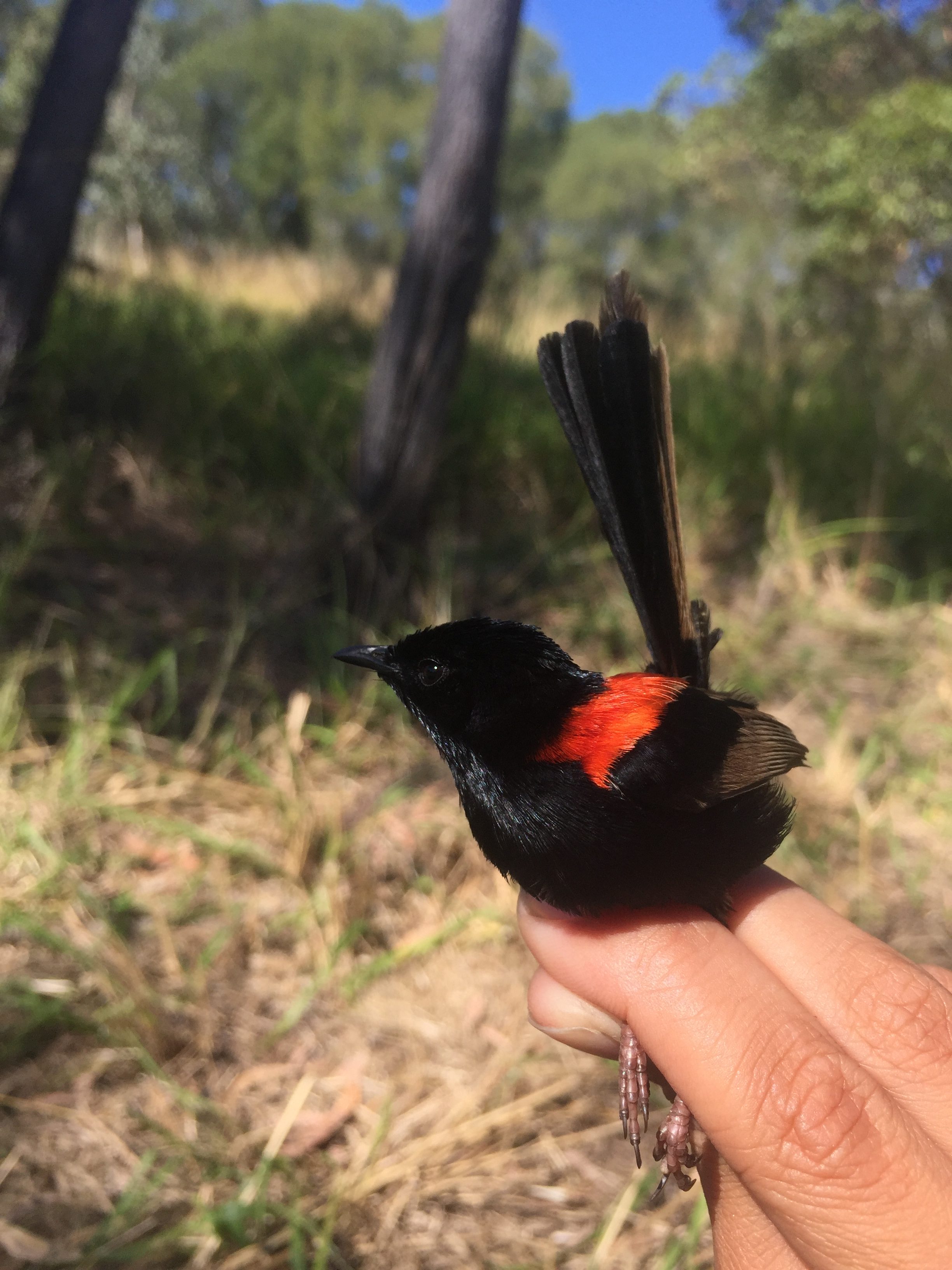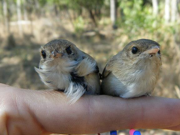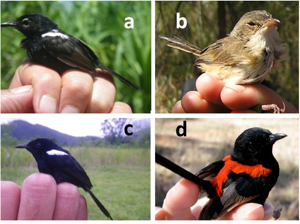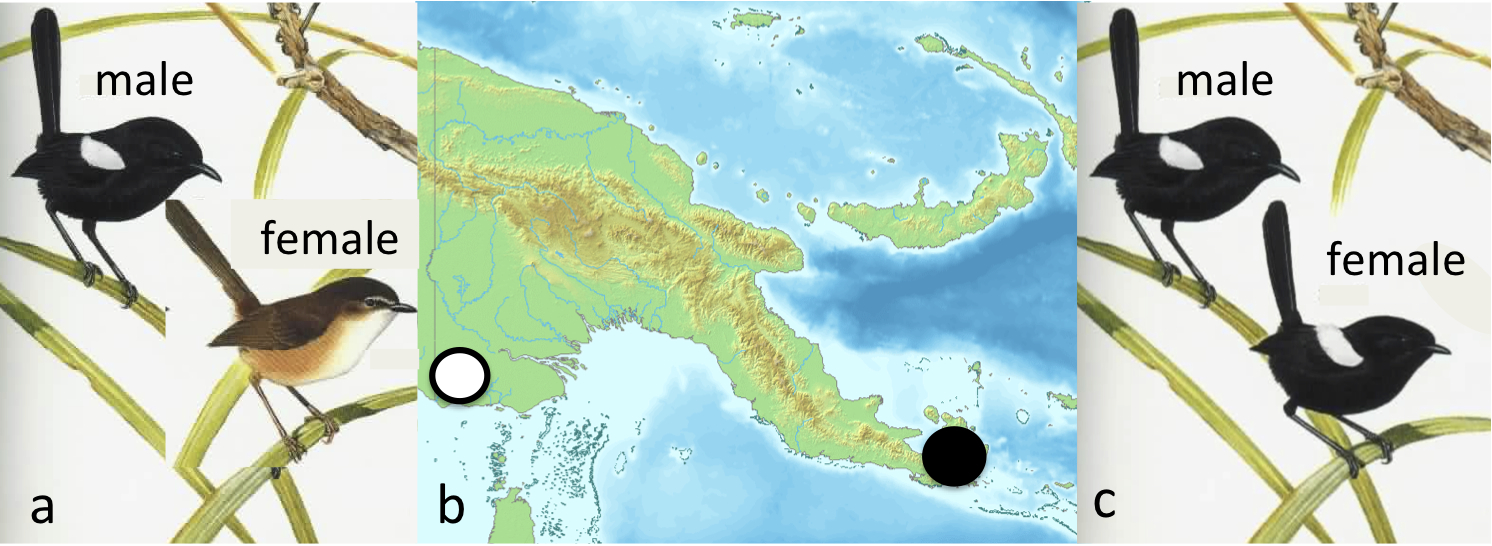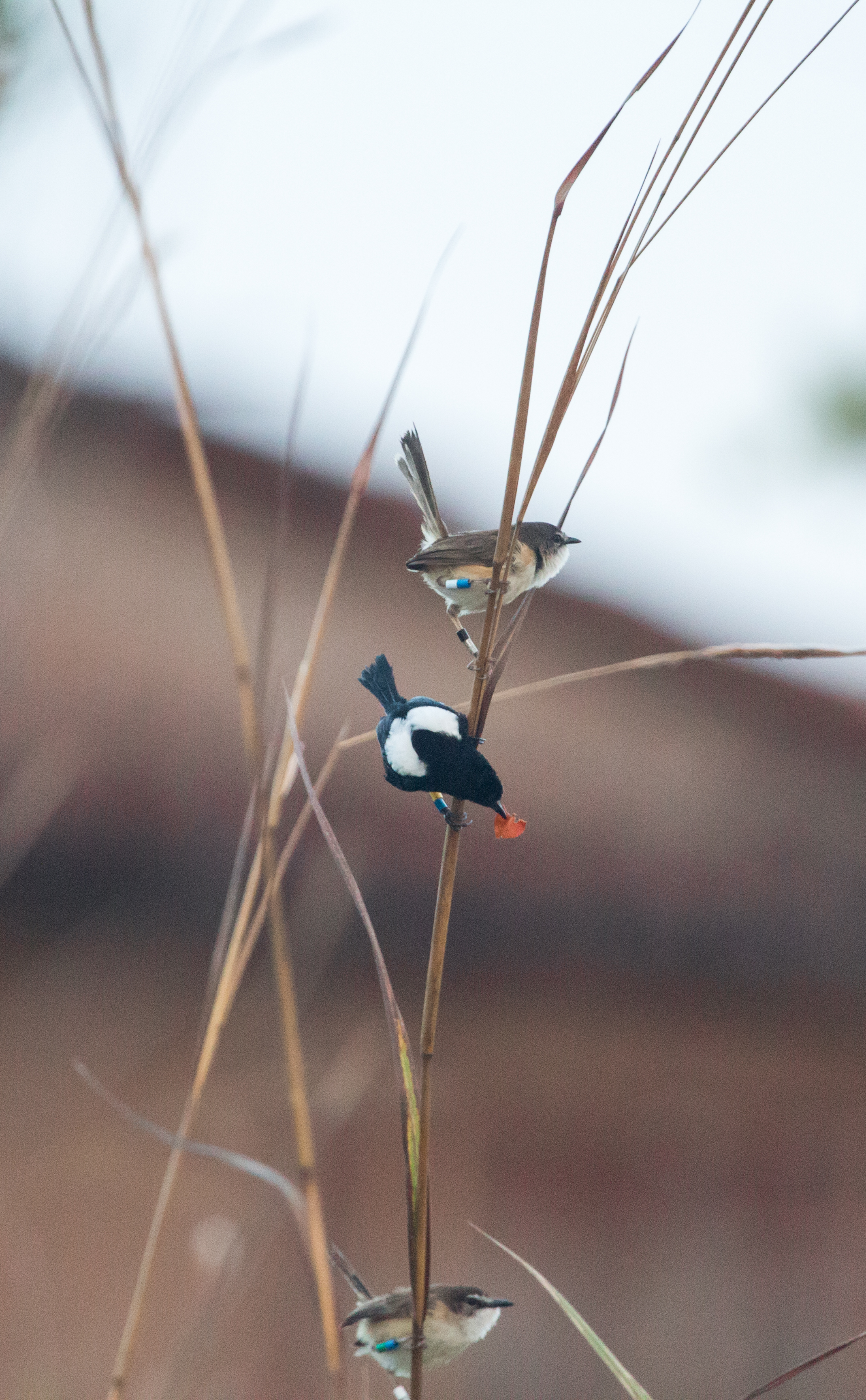Related Publications
2017
Enbody E.D., S.M. Lantz, and J. Karubian. 2017. Production of plumage ornaments among males and females of two closely related tropical passerine bird species. Ecology and Evolution. 00:1-11 doi 10.1002/ece3.3000 PDF
2017
Iverson, E.N.K., and J. Karubian. 2017. The role of bare parts in avian signaling. Auk 134: doi 10.1642/AUK-16-136.1 PDF
2017
Lantz, S.M., J. Boersma, H. Schwabl, and J. Karubian. 2017. Early-moulting red-backed fairywrens males acquire ornamented plumage in the absence of elevated androgens. Emu. doi 10.1080/01584197.2017.1297206 PDF
2016
Lantz, S.M. and J. Karubian. 2016. Male red-backed fairywrens enhance a plumage-based signal via adventitious molt. Auk 133:338-346. PDF
2014
A. Rose, S. Lantz, J. Swaddle, and J. Karubian. 2014. Habitat and Arthropod Relationships Supporting the Red-Backed Fairy-Wren in the Australian Tropical Savanna Dry Season. Tulane Undergraduate Research Journal – Volume 1. PDF
2014
Baldassarre, D. T., T. A. White, J. Karubian,, and M. S. Webster. 2014. Genomic and morphological analysis of a semipermeable avian hybrid zone suggests asymmetrical introgression of a sexual signal. Evolution. doi: 10.1111/evo.12457. PDF
2013
Karubian, J. 2013. Female ornamentation in Malurus fairy-wrens: a hidden evolutionary gem for understanding female perspectives on social and sexual selection. Emu 113: 248-258. doi: 10.1071/MU12093 PDF
2013
Baldassarre, D. T., H. A. Thomassen, J. Karubian, and M. S. Webster. 2013. The role of ecological variation in driving divergence of sexual and non-sexual traits in the red-backed fairy-wren (Malurus melanocephalus). BMC Evolutionary Biology 13: 75. doi: 10.1186/1471-2148-13-75. PDF
2012
Varian-Ramos, C.W., W.R. Lindsay, J. Karubian, and M.S. Webster. 2012. Female red-backed fairy-wrens do not appear to pay a price for high rates of sexual promiscuity. Auk. 129: 529-536. PDF *Editor’s pick: July issue of Auk
2011
Karubian, J., W.R. Lindsay, H. Schwabl, and M.S. Webster. 2011. Bill coloration, a flexible signal in a tropical passerine bird, is regulated by social environment and androgens. Animal Behaviour 81: 795-800. PDF
2010
Webster, M.S, J. Karubian, and H. Schwabl. 2010. Dealing with uncertainty: flexible reproductive strategies by a tropical passerine bird in an unstable ecological and social environment. Advances in The Study of Behavior 42: 123-153. PDF
2010
Varian-Ramos, C.W., J. Karubian, V. Talbott, I. Tapia, and M.S. Webster. 2010. Offspring sex ratios reflect lack of repayment by auxiliary males in a cooperatively breeding passerine. Behavioral Ecology and Sociobiology 64: 967-977. PDF
2009
Karubian, J., J.P. Swaddle, C.W. Varian, and M.S. Webster. 2009. The relative importance of male tail length and nuptial plumage on social dominance and mate choice in the red-backed fairy-wren: evidence for the multiple receiver hypothesis. Journal of Avian Biology. Journal of Avian Biology. 40: 559-568. PDF
2008
Karubian, J., T.S. Sillett, and M.S. Webster. 2008. The effects of plumage color on aggression and survival in male red-backed fairy-wrens. Behavioral Ecology 19(3): 507-516. PDF
2008
Karubian, J. 2008. Changes in breeding status are associated with rapid bill darkening in male red-backed fairy-wrens Malurus melanocephalus. Journal of Avian Biology 39(1):81-86. PDF
2008
Macedo R.H., J. Karubian, and M.S. Webster. 2008. Extra-pair paternity and sexual selection in socially monogamous birds: are tropical birds different? Auk. 125(4):769-777. PDF
2008
Webster, M.S., C.W. Varian, and J. Karubian. 2008. Plumage color and reproduction in the red-backed fairy-wren: Why be a dull breeder? Behavioral Ecology 19(3): 517-524. PDF
2008
Tori, W.P., R. Durães, T.B. Ryder, M. Anciães, J. Karubian, R.H. Macedo, J.A.C. Uy, P.G. Parker, T.B. Smith, A.C. Stein, M.S. Webster, J.G. Blake, and B.A. Loiselle. 2008. Advances in sexual selection theory: insights from tropical avifauna. Neotropical Ornithology 19:151-163. PDF
2003
Karubian, J. and A. Alvarado. 2003. Testing the function of petal displays in the red-backed fairy-wren. Emu 103:87-92. PDF
2002
Karubian, J. 2002. Costs and benefits of variable breeding plumage in the red-backed fairy-wren. Evolution 56(8): 1673-1682. PDF
2001
Karubian, J. and J.P. Swaddle. 2001. Selection on females can lead to ‘larger males’. Proceedings of the Royal Society of London (B) 268:725-728. PDF
2001
Karubian, J. 2001. Social organization and mating system of the Striated Grasswren. Condor 103:412-418. PDF
2000
Swaddle, J.P., J. Karubian, and S. Pruett-Jones. 2000. A novel pattern of reversed sexual dimorphism in fairy-wrens: implications for sexual selection. Behavioral Ecology 11:345-349. PDF

